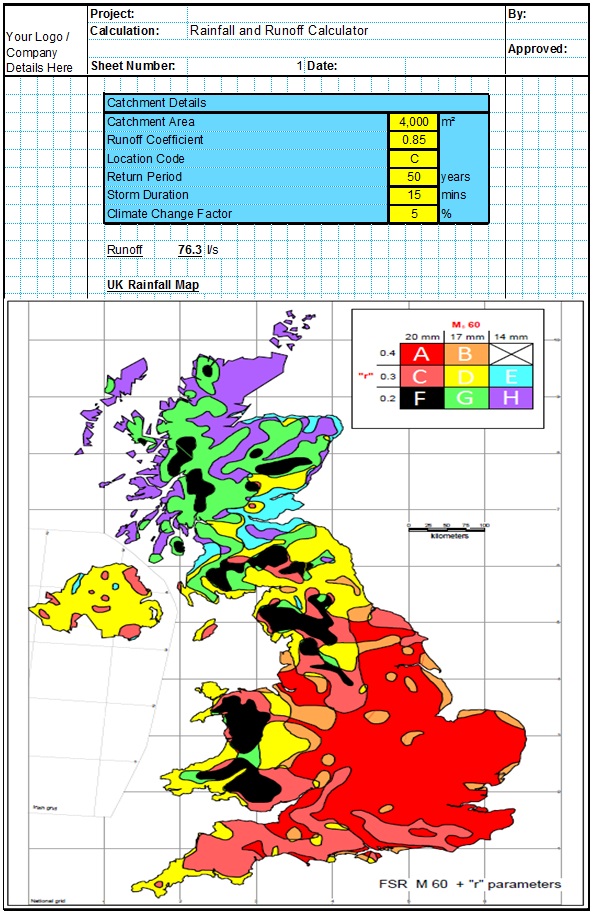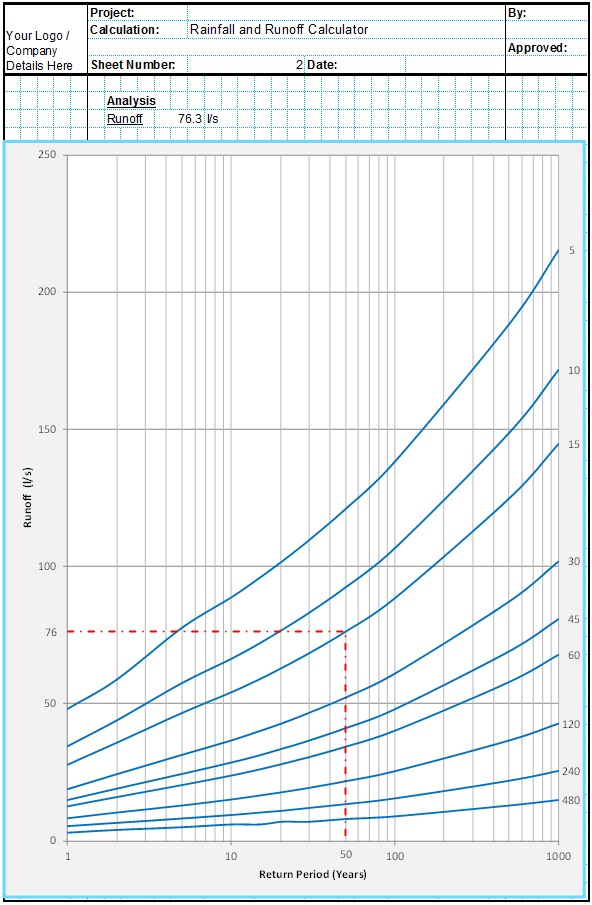The hydraulic radius is defined as the area of flow in a pipe or conduit divided by the wetted perimeter. The hydraulic radius is used as a measure of the efficiency of the conduit for transporting a fluid. As fluid flows through a conduit it loses energy due to the friction between the fluid and the sides of the conduit. Therefore the smaller the length of conduit in contact with the fluid, the less energy is lost due to friction and therefore the more efficiently the fluid is able to flow.
The effects of the hydraulic radius can be seen in the below diagram showing the velocity and flow achieved through a pipe with a circular cross section. As you can see the flow rate increases steadily as it reaches 50% height as the flow area increases with only a small increase in the wetted perimeter. However after 50% height the flow starts to become less efficient. The graph starts to level off and even falls as the pipe becomes full. This is because as the pipe narrows at the top the wetted perimeter increases so much relative to the flow area the velocity and even the flow rate begins to decrease. In fact a circular cross section pipe carries the most flow at around 94% of the height of the pipe. The pipe flowing full would carry around 7% less flow. This means that a circular cross section pipe can never flow full until it is already overloaded.
The hydraulic radius is used in drainage design to calculate and compare the flow in different shaped conduits. The Manning Formula includes the hydraulic radius directly as an input and for this reason Manning's equation is often used for calculating the flow in open channels and non-circular conduits. Indeed so long as the flow is open (ie not under pressure) and the channel or conduit does not include any re-entrant corners or significantly asymmetrical features, the Manning equation can be used to estimate the flow through the conduit.
A more accurate calculation known as the Colebrook-White Equation is also often used. The Colebrook-White equation is theoretically more correct than the Manning equation but it does not include the hydraulic radius as an input. However, as the hydraulic radius for circular pipes running full is 4 times the pipe diameter, it is possible to substitute the pipe diameter input in the Colebrook-White equation for 4 times the hydraulic radius. In this way the Colebrook-White equation can be modified to accommodate non-circular conduits.
Non-circular conduits are often used to take advantage of their different hydraulic radii compared with circular pipes. Arch include a large flat bottom which allows greater flow through the pipe compared to a similar height circular pipe. Egg shaped or ovoid pipes include narrow bottoms allowing greater velocities of flow through the pipe at small flows levels improving the self-cleansing nature of the pipes compared to circular pipes. These are explained in more detail here.
The CivilWeb Pipe Flow Calculator spreadsheet calculates the hydraulic radius as part of the flow rate calculations. The spreadsheet suite includes design and analysis spreadsheets for circular, arch, ovoid and elliptical shaped pipes. The suite also includes an geometric analysis tool for circular pipes which can calculate the hydraulic radius of the pipe at any height. The User Guide which is provided with the full license version of the spreadsheet also includes guidance on calculating the hydraulic radius for non-circular cross sections.
Get your copy of the CivilWeb Pipe Flow Calculator spreadsheet including a hydraulic radius analysis tool now for only £20.
Or why not bundle the CivilWeb Pipe Flow Calculator with our Rainfall Calculator Spreadsheet for only £5 extra?
Related Spreadsheets from CivilWeb;
Runoff Calculator Spreadsheet
This spreadsheet calculates the design runoff flow for a site in accordance with the a number of different methods including the Wallingford Procedure.
Full Drainage Design Suite
Full drainage design suite (50% Discount) including 6 spreadsheet suites;
- Pipe Flow Calculator
- Manning Open Channel Design
- Linear Drainage Design
- Runoff Calculator
- Attenuation Design
- Soakaway Design



